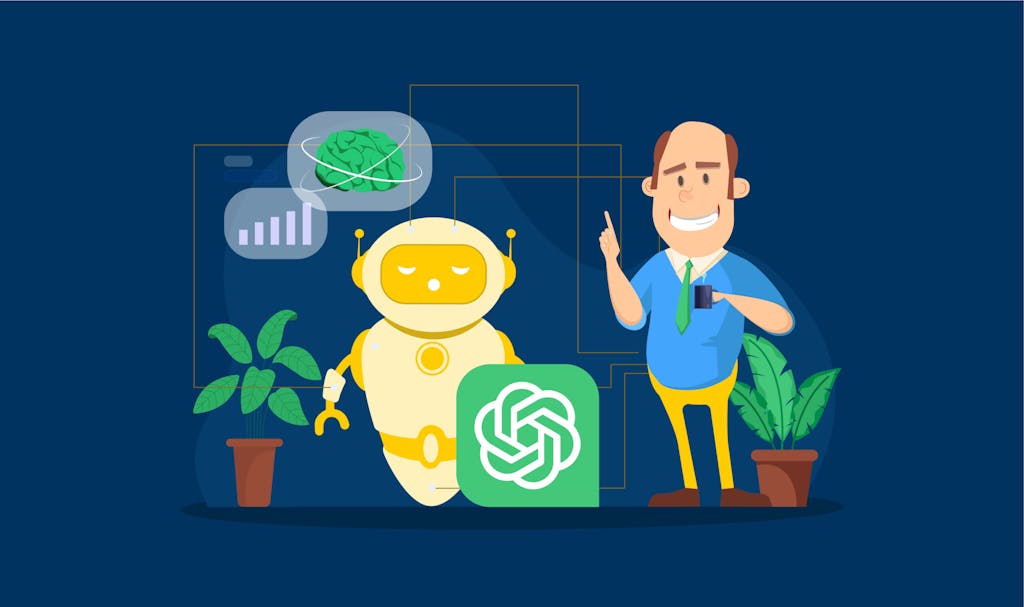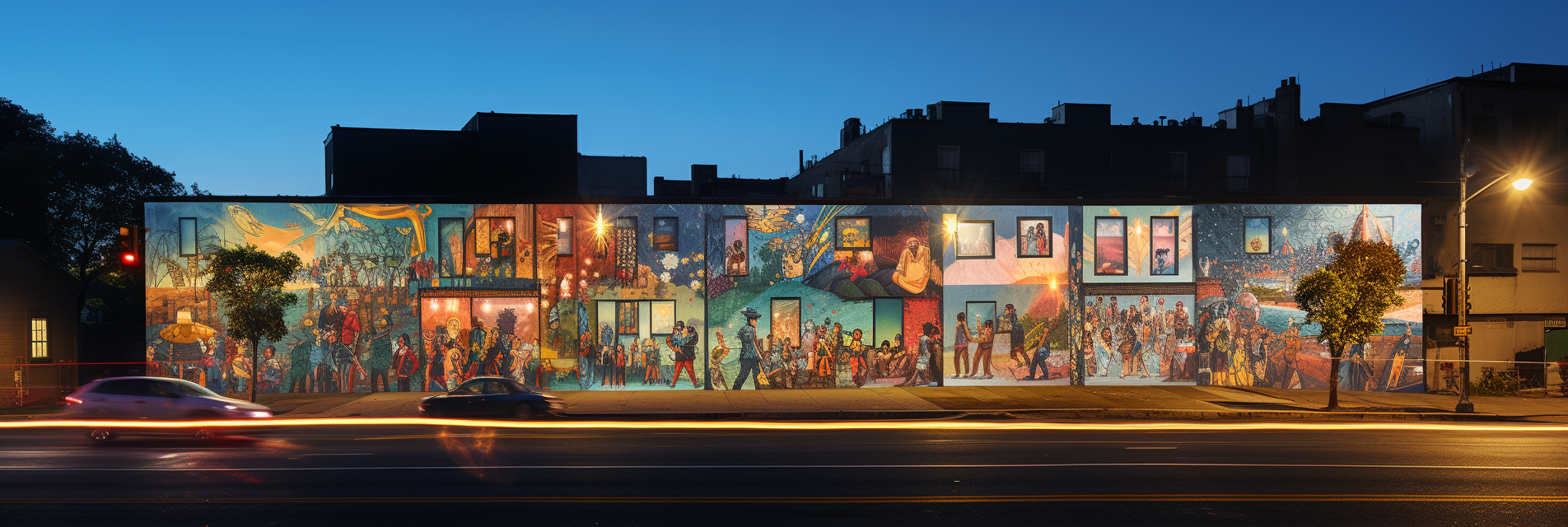
Published: Dec 3, 2024
15 Mind-Blowing ChatGPT Content Ideas You Haven't Thought Of (2025 Edition)
15 Mind-Blowing ChatGPT Content Ideas You Haven’t Thought Of (2025 Edition)
I’ve been in the AI content game since ChatGPT was in diapers, and let me tell you, things have changed! Remember when we thought auto-completing sentences was cool? Ha! Now we’re practically co-authoring with robots. But here’s the kicker - most folks are still using ChatGPT like it’s 2022. Time to level up, people! I’ve got some seriously juicy content ideas that’ll make your audience do a double-take. Ready to blow some minds?
Quick Answers to Top Questions
How can I create viral content consistently with ChatGPT?
- Use the “Trend Fusion Engine” technique to blend current trends with unexpected twists, creating share-worthy content that catches fire.
What’s the secret to producing high-quality content 10x faster?
- Implement the “Modular Content Assembly” method to build a library of AI-generated content blocks that can be mixed and matched for rapid, quality content creation.
How do I make my AI-generated content stand out from the sea of sameness?
- Leverage the “Personality Injection Protocol” to infuse your brand’s unique voice and quirks into every piece of AI-assisted content.
Table of Contents
- Narrative Alchemy
- Hyper-Personalization Engines
- AI-Powered Content Ecosystems
- Multi-Modal Content Fusion
Narrative Alchemy
Let’s dive into some mind-bending techniques that’ll turn your ChatGPT stories from “meh” to “holy cow!” I’ve been experimenting with these for months, and trust me, they’re game-changers.
The Reality Bender
This technique is all about warping reality in your stories. Think Christopher Nolan meets AI. Here’s how it works:
- Start with a normal prompt, then gradually introduce conflicting elements.
- Use ChatGPT to resolve these conflicts in unexpected ways.
- Keep pushing the boundaries of what’s “possible” in your story world.
Implementation tips:
- Begin with subtle changes, like shifting character perspectives mid-sentence.
- Introduce impossible physics, like gravity reversing or time flowing backwards.
Enhancement ideas:
- Combine with real scientific theories for mind-bending “what-ifs”.
- Layer multiple reality distortions for truly trippy narratives.
The Emotion Sculptor
This hack taps into ChatGPT’s language understanding to craft stories that hit readers right in the feels.
- Input specific emotional keywords and phrases.
- Guide ChatGPT to weave these emotions throughout the narrative.
- Use contrasting emotions for dramatic effect.
Implementation tips:
- Create an “emotion map” for your story, plotting the emotional journey.
- Use sensory details to amplify emotional impact.
Enhancement ideas:
- Experiment with rapid emotional shifts for psychological thrillers.
- Blend conflicting emotions to create complex, realistic characters.
The Metaverse Weaver
This technique creates interconnected story universes across multiple platforms. It’s like Marvel, but on steroids.
- Develop a core story world with ChatGPT.
- Create branching narratives for different platforms (social media, blog, video).
- Use AI to ensure consistency across all story threads.
Implementation tips:
- Start with a “story bible” to keep track of your metaverse rules.
- Use platform-specific prompts to tailor content (e.g., shorter for Twitter, visual for Instagram).
Enhancement ideas:
- Incorporate real-world events into your metaverse for added realism.
- Create interactive elements where reader choices influence the metaverse.
Combination potential: Imagine combining The Reality Bender with The Metaverse Weaver. You could create a multi-platform story where reality itself shifts between different social media channels. On Instagram, gravity might work differently, while on Twitter, time flows backwards. The Emotion Sculptor could then be used to craft the perfect emotional resonance for each platform’s unique reality.
The Quantum Narrative Generator
This advanced technique creates stories that exist in multiple states simultaneously, like Schrödinger’s cat.
- Input a basic plot structure to ChatGPT.
- Generate multiple versions of key events.
- Use AI to create a coherent narrative that incorporates all possibilities.
Implementation tips:
- Start with binary choices, then expand to multiple possibilities.
- Use visual aids like flowcharts to map out your quantum narrative.
Enhancement ideas:
- Incorporate reader interactivity to “collapse” the story wavefunction.
- Experiment with paradoxes and time loops for mind-bending narratives.
The Archetypal Fusion Engine
This technique blends classic storytelling archetypes in unexpected ways, creating fresh, compelling narratives.
- Input a list of Jungian archetypes to ChatGPT.
- Ask the AI to combine them in unique ways.
- Build your story around these hybrid archetypes.
Implementation tips:
- Start with well-known archetypes, then get more obscure.
- Use the hybrid archetypes to subvert reader expectations.
Enhancement ideas:
- Create a “character evolution” arc where archetypes shift throughout the story.
- Blend archetypes from different cultural traditions for truly unique characters.
Remember, these techniques are just the starting point. The real magic happens when you start combining them in unexpected ways. Happy alchemizing!
Hyper-Personalization Engines
I’ve been diving deep into hyper-personalization lately, and let me tell you, it’s mind-blowing what ChatGPT can do. We’re talking next-level content tailoring that makes your audience feel like you’re reading their minds. Let’s break down some cutting-edge techniques:
Data Integration Powerhouse
This technique is all about feeding ChatGPT a smorgasbord of user data to create uncannily personalized content. Here’s the secret sauce:
- Gather data from multiple sources (social media, purchase history, browsing behavior).
- Use ChatGPT to analyze patterns and create detailed user profiles.
- Generate content that speaks directly to each user’s interests and behaviors.
Implementation tips:
- Use APIs to pull real-time data from various platforms.
- Create a unified data schema to streamline information for ChatGPT.
Enhancement ideas:
- Implement machine learning algorithms to continuously refine user profiles.
- Experiment with predictive analytics to anticipate user needs before they arise.
Real-Time Adaptive Content
This hack takes personalization to the next level by adjusting content on the fly based on user engagement:
- Set up real-time tracking of user interactions with your content.
- Feed this data to ChatGPT to dynamically adjust the content’s tone, length, and complexity.
- Create a feedback loop that continually optimizes the user experience.
Implementation tips:
- Use event-driven architecture to trigger content updates in milliseconds.
- Implement A/B testing to fine-tune your adaptation algorithms.
Enhancement ideas:
- Integrate sentiment analysis to gauge emotional responses and adjust accordingly.
- Develop a “content DNA” system that allows for granular adjustments to specific elements.
Privacy-First Personalization
With GDPR and other privacy laws in full swing, this technique balances personalization with user privacy:
- Use ChatGPT to create “anonymized personas” based on aggregated data.
- Generate personalized content for these personas instead of individuals.
- Allow users to opt-in to deeper personalization if desired.
Implementation tips:
- Implement differential privacy techniques to protect individual user data.
- Create a transparent “personalization settings” dashboard for users.
Enhancement ideas:
- Develop a “privacy score” system that users can adjust to control personalization levels.
- Experiment with federated learning to improve personalization without centralizing data.
Multi-Dimensional Personalization Matrix
This advanced technique creates a multi-faceted personalization approach:
- Identify key personalization dimensions (e.g., topic interest, reading level, preferred content format).
- Use ChatGPT to generate content variations along each dimension.
- Combine these variations dynamically based on user profiles.
Implementation tips:
- Start with 3-4 dimensions and gradually increase complexity.
- Use tensor decomposition techniques to handle high-dimensional data efficiently.
Enhancement ideas:
- Implement “personalization layers” that can be mixed and matched for infinite variations.
- Develop an AI-powered “dimension discovery” tool to identify new personalization opportunities.
Contextual Micro-Moments
This technique focuses on delivering hyper-relevant content in precise moments:
- Use ChatGPT to analyze user context (time, location, device, current activity).
- Generate bite-sized content snippets tailored to specific micro-moments.
- Deliver these snippets through the most appropriate channel (push notification, email, in-app message).
Implementation tips:
- Develop a robust context detection system using device sensors and APIs.
- Create a library of micro-content templates that ChatGPT can quickly customize.
Enhancement ideas:
- Implement predictive algorithms to anticipate and prepare for upcoming micro-moments.
- Experiment with augmented reality to deliver contextual content in the physical world.
Remember, the key to successful hyper-personalization is continuous experimentation and refinement. What works for one audience might fall flat for another. Keep pushing the boundaries, and you’ll discover personalization techniques that’ll make your content irresistible to your target audience.
AI-Powered Content Ecosystems
Let’s dive into the wild world of AI-powered content ecosystems. This isn’t your grandma’s content strategy - we’re talking about interconnected networks of content that practically have a life of their own. I’ve been experimenting with these systems for months, and the results are mind-blowing.
Self-Evolving Content Hubs
Imagine a content hub that grows and adapts on its own. Here’s how it works:
- Create a core set of content pieces using ChatGPT.
- Set up an AI system to monitor user interactions and engagement.
- Use this data to automatically generate new content and modify existing pieces.
Implementation tips:
- Start with a specific niche to keep the content focused.
- Use natural language processing to identify trending topics within your content ecosystem.
Enhancement ideas:
- Implement machine learning algorithms to predict which content types will perform best.
- Experiment with content “mutations” where AI combines elements from high-performing pieces.
Dynamic Cross-Platform Storytelling
This technique creates an interconnected narrative that spans multiple platforms:
- Develop a core story universe with ChatGPT.
- Create platform-specific content snippets that tie into the main narrative.
- Use AI to ensure consistency and manage the story’s evolution across platforms.
Implementation tips:
- Create a “story bible” to keep track of your universe’s rules and key elements.
- Use platform-specific AI models to optimize content for each channel.
Enhancement ideas:
- Implement user-driven storylines where audience interactions shape the narrative.
- Experiment with ARGs (Alternate Reality Games) that blur the line between fiction and reality.
AI-Driven Content Swarms
This advanced technique uses multiple AI agents to create a diverse, interconnected content ecosystem:
- Set up a “swarm” of specialized ChatGPT instances, each focused on a specific content type or topic.
- Create a central AI coordinator to manage the swarm’s output.
- Allow the swarm to generate content that cross-references and builds upon itself.
Implementation tips:
- Start with a small swarm (3-5 agents) and gradually increase complexity.
- Implement a “conflict resolution” system for when agents generate contradictory content.
Enhancement ideas:
- Experiment with “adversarial” agents that challenge each other’s content for increased depth.
- Develop a reputation system within the swarm to prioritize high-performing agents.
Semantic Web Content Networks
This technique creates a web of interconnected, machine-readable content:
- Use ChatGPT to generate content with embedded semantic markup.
- Create an AI system that can navigate and understand these semantic connections.
- Automatically generate new content that fills gaps in the semantic network.
Implementation tips:
- Start with a well-defined ontology for your content domain.
- Use RDF (Resource Description Framework) to structure your semantic data.
Enhancement ideas:
- Implement a “knowledge graph” visualization tool for users to explore content connections.
- Experiment with automated fact-checking using the semantic network.
Adaptive Learning Content Systems
This technique creates personalized learning experiences that evolve with the user:
- Use ChatGPT to generate a diverse set of educational content.
- Implement an AI system that assesses user understanding and learning style.
- Dynamically assemble and modify content paths based on individual user progress.
Implementation tips:
- Start with a specific subject area and create content at multiple difficulty levels.
- Use spaced repetition algorithms to optimize content presentation.
Enhancement ideas:
- Implement “learning companions” - AI agents that provide personalized guidance and motivation.
- Experiment with gamification elements that adapt to individual user preferences.
These AI-powered content ecosystems are just the beginning. The real magic happens when you start combining these techniques. Imagine a self-evolving content hub that uses semantic web principles to create a dynamic, cross-platform learning experience. The possibilities are endless!
Remember, building these systems takes time and experimentation. Start small, iterate often, and don’t be afraid to push the boundaries. Who knows? You might just create the next big thing in content marketing.
Multi-Modal Content Fusion
Let’s dive into the wild world of multi-modal content fusion. This isn’t just about slapping some text and images together - we’re talking next-level stuff that’ll make your audience’s jaws drop.
Text-to-Image Storytelling
I’ve been experimenting with this technique for months, and it’s a game-changer. Here’s how it works:
- Use ChatGPT to generate a compelling story or article.
- Feed key phrases or descriptions into an AI image generator like DALL-E or Midjourney.
- Weave the generated images into your text for a visually stunning narrative.
Implementation tips:
- Start with vivid, specific descriptions for best image results.
- Create a consistent visual style by using similar prompts across images.
Enhancement ideas:
- Experiment with generating multiple images per description and letting your audience vote on their favorites.
- Try creating animated transitions between images for a more dynamic experience.
AI-Powered Audio Narration
This technique takes your written content to the next level by adding an audio layer:
- Generate your written content with ChatGPT.
- Use an AI voice synthesis tool like WaveNet to create a natural-sounding narration.
- Sync the audio with your text for an immersive reading experience.
Implementation tips:
- Experiment with different AI voices to find one that matches your brand.
- Break your content into smaller chunks for easier syncing and consumption.
Enhancement ideas:
- Add background music or ambient sounds that change based on the content’s mood.
- Implement user controls to adjust reading speed or switch between multiple narrators.
Interactive Data Visualization
This hack combines ChatGPT’s analysis capabilities with cutting-edge data viz tools:
- Use ChatGPT to analyze complex datasets and generate insights.
- Feed these insights into a data visualization tool like D3.js.
- Create interactive visualizations that allow users to explore the data themselves.
Implementation tips:
- Start with simple charts and gradually increase complexity.
- Use clear labels and tooltips to guide users through your visualizations.
Enhancement ideas:
- Implement AI-driven “data stories” that guide users through key insights.
- Experiment with VR/AR visualizations for truly immersive data experiences.
Video Script Generation and Storyboarding
This technique streamlines the video creation process:
- Use ChatGPT to generate a video script based on your topic.
- Feed scene descriptions to an AI image generator to create storyboard frames.
- Combine the script and storyboard to create a comprehensive video plan.
Implementation tips:
- Use specific, visual language in your script for better storyboard results.
- Break your script into clear scenes or segments for easier visualization.
Enhancement ideas:
- Experiment with AI-generated voice-overs and basic animations for quick video prototypes.
- Implement a feedback loop where viewer engagement data influences future script generation.
Augmented Reality Content Layers
This cutting-edge technique adds an interactive layer to the real world:
- Generate location-specific content with ChatGPT.
- Use AI image generation to create visual elements.
- Implement these elements in an AR app that overlays info on real-world locations.
Implementation tips:
- Start with a specific niche or location to keep your content focused.
- Use geofencing to trigger content based on user location.
Enhancement ideas:
- Implement user-generated content features to create a living, evolving AR world.
- Experiment with AI-driven “virtual tour guides” that adapt to user interests.
Remember, the key to successful multi-modal content fusion is ensuring all elements work together seamlessly. It’s not just about throwing every format at the wall and seeing what sticks. Each component should enhance the others, creating an experience that’s greater than the sum of its parts.
I’ve found that starting small and iterating quickly is the best approach. Maybe begin with a simple text-to-image story, then gradually add audio elements. Before you know it, you’ll be creating mind-bending AR experiences that’ll have your audience coming back for more.
Now get out there and start fusing! The future of content is multi-modal, and with these techniques, you’ll be leading the pack.
